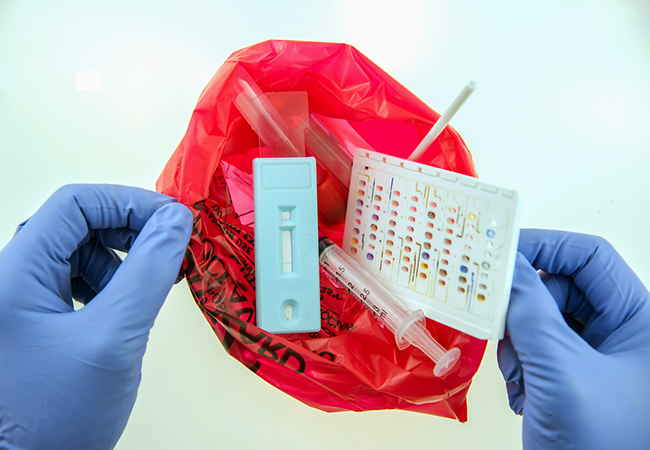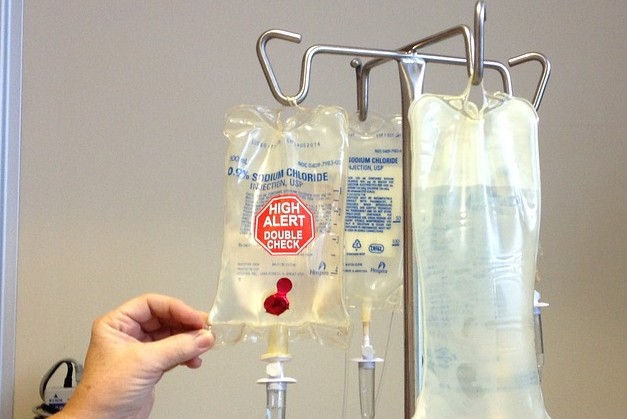Safety and security First: Your Overview to Liable Medical Waste Removal Services
Safety and security First: Your Overview to Liable Medical Waste Removal Services
Blog Article
The Significance of Proper Medical Garbage Disposal: An Overview for Medical Care Facilities
Correct clinical garbage disposal is a crucial element of healthcare facility management, ensuring the safety and health of individuals, team, and the atmosphere. From comprehending the various classifications of clinical waste to abiding by governing requirements, healthcare centers have to embrace reliable waste partition techniques and choose suitable disposal approaches. Nevertheless, the importance of correct medical waste disposal surpasses simple compliance; it is an obligation that needs ongoing training and education and learning for team. In this guide, we will certainly explore the various facets of medical garbage disposal and highlight the necessary steps that health care centers need to take. By carrying out these techniques, medical care facilities can reduce threats, protect public health and wellness, and add to a cleaner, more secure environment.
Comprehending Clinical Waste Categories
Recognizing clinical waste classifications is critical for correct disposal in medical care centers. Clinical waste is a broad term that encompasses different types of waste created in health care settings, such as clinics, health centers, and research laboratories. Classifying medical waste assists make certain that it is taken care of, saved, and disposed of safely and based on appropriate laws.
There are a number of categories of clinical waste that health care centers need to be familiar with. These groups consist of contagious waste, sharps waste, pharmaceutical waste, chemical waste, and radioactive waste (medical waste disposal services with WasteX). Each classification has details qualities and calls for various disposal methods to reduce the risk of injury to medical care employees, clients, and the setting
Infectious waste, for instance, refers to throw away contaminated with possibly contagious products, such as blood, body liquids, and tissues. Pharmaceutical waste consists of ended or extra drugs, while chemical waste is composed of harmful chemicals used in clinical procedures.
Conformity With Regulatory Demands
Healthcare centers must make certain conformity with regulative demands for proper clinical waste disposal. Regulatory bodies, such as the Environmental Protection Agency (EPA) and the Occupational Security and Wellness Management (OSHA), have developed guidelines and standards to guard public health and the setting. These guidelines detail the proper handling, storage, transportation, and disposal of clinical waste.
Compliance with governing needs is important for medical care facilities to stay clear of lawful penalties, reputational damage, and potential damage to human wellness and the setting. Failure to follow these guidelines can result in penalties, lawsuits, and also the suspension or retraction of running licenses.
To make certain compliance, health care facilities should establish detailed waste management programs that consist of staff training, appropriate waste segregation, and the usage of suitable containers and labels. Regular audits and examinations ought to also be conducted to recognize any non-compliance problems and resolve them without delay.
It is vital for medical care centers to remain up to day with modifications in regulations and upgrade their waste administration methods appropriately. This can be attained by actively checking updates from regulative bodies and participating in training programs and workshops.
Executing Reliable Waste Partition Practices
To guarantee proper clinical garbage disposal, medical care centers should apply effective waste segregation practices. Waste segregation is an important action in the total waste management process, as it helps reduce the danger of infection, stops cross-contamination, and makes sure the secure disposal of various kinds of waste. Effective waste segregation practices involve separating clinical waste right into various groups based upon its features and possible dangers.
One typical method is the segregation of sharps waste, such as needles and scalpels, from other kinds of clinical waste. Sharps waste need to be positioned in puncture-resistant containers to avoid injuries and possible infections. Furthermore, contaminated materials, such as pharmaceuticals and chemicals, ought to be separated from basic clinical waste to avoid environmental contamination.
Proper labeling and color-coding of waste containers are important for effective waste partition. Visible and clear tags need to be put on each container to suggest the kind of waste it has and any type of special handling needs - medical waste disposal services with WasteX. Additionally, color-coding can be made use of to differentiate between various waste groups, making it simpler for medical care staff to determine and get rid of of waste correctly
Routine training and education and learning for medical care staff is important for the effective implementation of waste segregation methods. Team member should be informed on the different waste classifications, correct partition techniques, and the importance of following waste administration procedures. This will certainly assist make certain conformity and uniformity in waste partition techniques throughout the center.
Finding Appropriate Disposal Methods
Proper selection of appropriate disposal methods is vital in making certain the secure and environmentally accountable administration of clinical waste in medical care centers. Medical care centers produce a range of medical waste, including sharps, transmittable waste, pharmaceutical waste, and chemical waste - medical waste removal service. Each sort of waste requires specific disposal approaches to decrease the danger of contamination, injury, and environmental harm
One usual disposal technique for clinical waste is incineration. Incineration involves the regulated burning of waste at high temperature levels. This approach is efficient in ruining pathogens and reducing the quantity of waste. Nevertheless, it can release damaging pollutants right into the air otherwise correctly controlled.

Chemical disinfection is another method used for certain sorts of clinical waste, such as pharmaceutical waste. This method utilizes chemicals to neutralize or destroy impurities. It is crucial to choose chemicals that are eco friendly and safe.
In some situations, landfill disposal may appropriate for non-hazardous medical waste (medical waste disposal services with WasteX). Proper partition and product packaging are essential to prevent leak or contamination.
Eventually, medical care centers must very carefully assess the qualities of their clinical waste and pick ideal disposal methods that focus on safety, environmental management, and regulative compliance. Regular training and monitoring are necessary to make certain that healthcare team complies with appropriate disposal methods.

Training and Educating Staff on Appropriate Disposal Procedures
Team education and learning and training play a vital role in making certain the correct disposal of clinical waste in health care centers. It is necessary that all team members, including doctors, nurses, technicians, and support staff, receive detailed training medical waste disposal services with WasteX on appropriate disposal treatments. This training should cover the different sorts of clinical waste, their possible dangers, and the appropriate methods for dealing with, setting apart, and disposing of them.
Among the main objectives of personnel education and training is to make sure that all healthcare specialists comprehend the relevance of correct disposal treatments and the possible consequences of improper waste administration. They need to be familiar with the dangers related to clinical waste, such as the transmission of infections and the contamination of the setting. medical waste removal service. By understanding these dangers, team member will certainly be much more inspired medical waste disposal services with WasteX to follow proper disposal procedures and take the required precautions to safeguard themselves, their associates, and the area
Educating need to also cover the usage of individual protective equipment (PPE) and the appropriate techniques for dealing with clinical waste. Team member should be enlightened on exactly how to determine and segregate various kinds of waste, such as sharps, contagious waste, and unsafe chemicals. They should also be trained on the correct use of waste containers, such as sharps containers and biohazard bags, as well as the significance of labeling and sealing these containers appropriately.
Moreover, team education and learning and training need to consist of regular updates and correspondence course to ensure that health care specialists remain notified concerning the most recent policies and best techniques in medical waste disposal. This continuous education and learning is vital to maintain a high level of awareness and compliance among personnel.
Conclusion
In final thought, appropriate clinical waste disposal is of utmost relevance for healthcare facilities. Comprehending the various groups of clinical waste and complying with regulatory demands makes sure the safety and security and health of both healthcare workers and the general public.
From comprehending link the various groups of medical waste to abiding with regulatory demands, health care centers have to embrace efficient waste partition methods and pick suitable disposal techniques. These groups include contagious waste, sharps waste, pharmaceutical waste, chemical waste, and contaminated waste.To ensure appropriate clinical waste disposal, medical care facilities need to apply effective waste segregation methods. Waste partition is an essential step in the overall waste administration procedure, as it assists decrease the threat of infection, prevents cross-contamination, and guarantees the risk-free disposal of different types of waste. Health care centers produce a selection of clinical waste, consisting of sharps, transmittable waste, pharmaceutical waste, and chemical waste.
Report this page